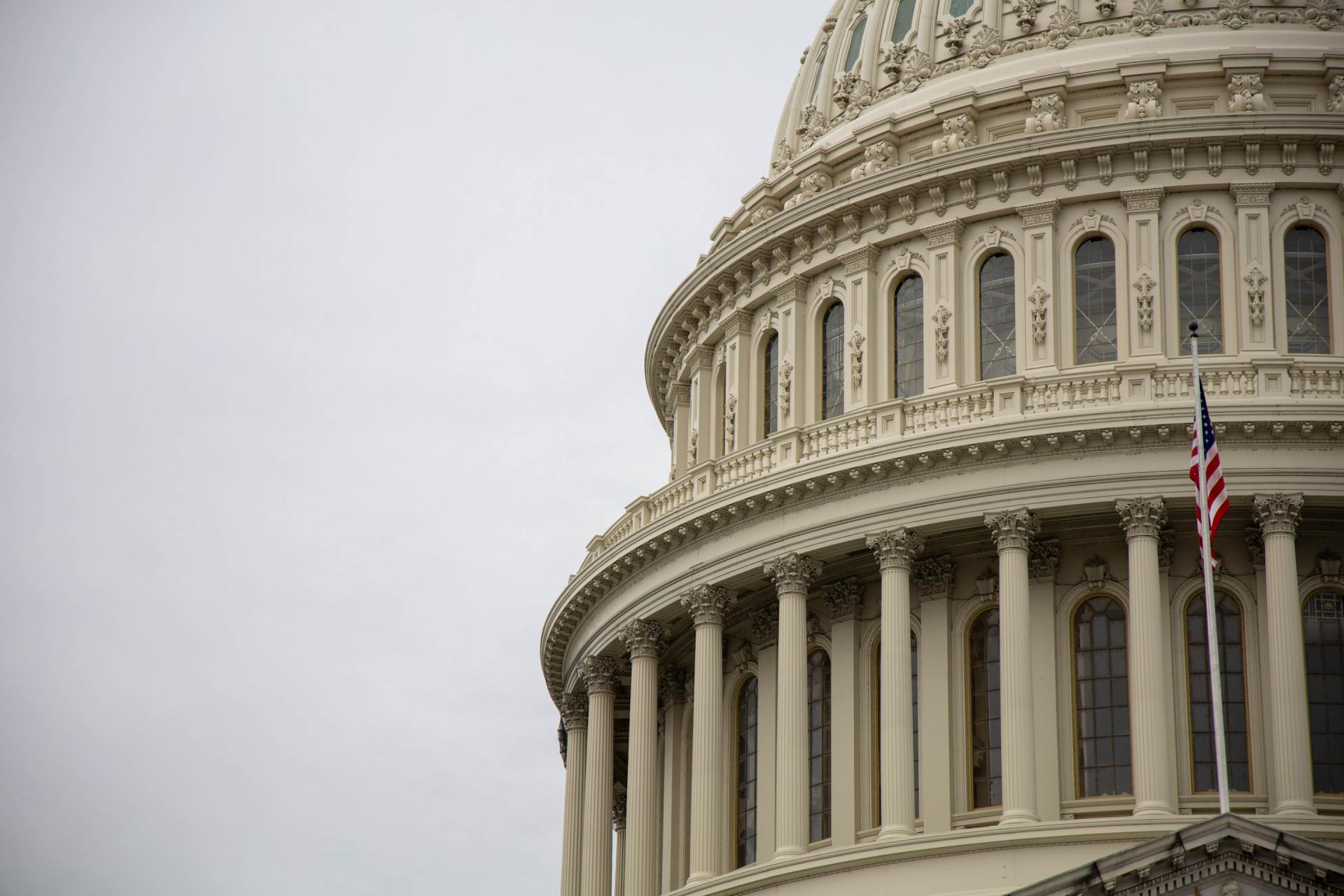
Slide title
COVID-19 FAQs - Check back for regular updates as they become available
Button
Slide title
COVID-19 FAQs - Check back for regular updates as they become available
Button
Slide title
COVID-19 FAQs - Check back for regular updates as they become available
Button
Slide title
COVID-19 FAQs - Check back for regular updates as they become available
Button
Slide title
COVID-19 FAQs - Check back for regular updates as they become available
Button
Slide title
COVID-19 FAQs - Check back for regular updates as they become available
Button
Slide title
COVID-19 FAQs - Check back for regular updates as they become available
Button
Slide title
COVID-19 FAQs - Check back for regular updates as they become available
Button
Slide title
COVID-19 FAQs - Check back for regular updates as they become available
Button
- President Trump Orders Payroll Tax Deferment
The Department of Treasury Will Stop Collecting Certain Payroll Taxes Between Sept. 1 and Dec. 31
On Aug. 8, 2020, President Donald J. Trump ordered the U.S. Department of Treasury (the Department) to defer collecting certain payroll taxes from Sept. 1 to Dec. 31, 2020. Because the order is for a deferral, the unpaid taxes will need to be recouped at a later time, unless the Department can find an avenue to eliminate the obligation to pay the taxes.
Eligibility for Deferred Payroll Taxes
Under the order, employers will be able to defer taxes that help pay for Social Security and Medicare for individuals who receive less than $4,000 during any bi-weekly pay period (the equivalent of $104,000 per year) on a pre-tax basis.
Affected taxes will be deferred without any penalties, interest, additional amount or addition to the tax. The White House’s position is that deferring this tax will alleviate the hardship of individuals affected by the economic consequences of the COVID-19 pandemic.
Implementation Obstacles
Government agencies hold employers and payroll providers responsible for withholding an adequate amount of payroll taxes from their employees’ wages and compensation.
At this time, it is still unclear whether employers will opt to release the affected payroll taxes to eligible employees for two reasons:
- Implementing changes in payroll processes and procedures is not always a quick or easy process—an obstacle aggravated by the fact that the Department has a scarce few weeks to issue guidance to implement this presidential directive; and
- There is a possibility that the deferred taxes will need to be collected at a future date.
Next Steps for Employers
- Employers should actively monitor upcoming guidance from the Department of Treasury
- Employers should balance the benefit of releasing affected taxes to eligible employees against the possibility of having to recoup those taxes later
- Employers should take time to evaluate now how quickly they can alter their payroll practices and procedures in case they decide to opt for this payroll tax deferral
- DOL Publishes More Q&As on Employment Laws and Coronavirus
Additional Guidance Applies FLSA, FMLA and FFCRA to COVID-19 Workplace Situations
On July 20, 2020, the U.S. Department of Labor (DOL) announced the agency’s publication of additional questions and answers about the operation of the federal Family and Medical Leave Act (FMLA), the Fair Labor Standards Act (FLSA) and the Families First Coronavirus Response Act (FFCRA) in workplace situations involving COVID-19.
The DOL’s new guidance on COVID-19 and the FLSA addresses topics such as teleworking and compensable time, maintaining employees’ exempt and nonexempt status, and hazard pay. The new guidance on COVID-19 and the FMLA adds questions on whether a telemedicine appointment can establish a serious medical condition under the statute, and whether the FMLA prohibits employers from requiring a COVID-19 test of employees returning from FMLA leave.
Issues addressed by the DOL’s additional Q&As on the FFCRA include requiring employees returning from FFCRA leave to be tested for COVID-19 and the availability of FFCRA leave after a furlough.
For more information and resources, please see the DOL’s COVID-19 and the American Workplace website.
- W-2 Reporting Required for FFCRA Leave Pay
New Guidance Issued by IRS and Treasury Department
Employers are required to report sick and family leave wages paid to employees under the Families First Coronavirus Response Act (FFCRA) on Form W-2, according to guidance from the IRS and the U.S. Treasury Department. The guidance was provided in Notice 2020-54, issued by the agencies on July 8, 2020.
Employers will report FFCRA leave compensation in either Box 14 of Form W-2, or in a statement provided with the Form W-2. The reporting requirement additionally provides self-employed individuals who are also employees with the information necessary to claim sick and family leave tax credits related to their self-employment.
Under the FFCRA, covered employers must provide employees with up to 80 hours of paid sick leave and up to 10 weeks of partially compensated family and medical leave for COVID-19-related reasons. Tax credits are available to employers for wages paid under the FFCRA leave provisions.
- Is COVID-19 impacting MasterPay USA's payroll operations?
Our services will not be disrupted because of Coronavirus (COVID-19). Our product is 100% cloud-based to ensure constant and secure availability. In addition, our employees work remotely and are here to provide uninterrupted services and support.
- What is the Families First Coronavirus Response Act (FFCRA)?
The Families First Coronavirus Response Act (FFCRA) requires certain employers to provide employees with expanded family and medical leave for specified reasons related to COVID-19. The Department of Labor’s (Department) Wage and Hour Division (WHD) administers and enforces the new law’s paid leave requirements. These provisions will apply from the effective date through December 31, 2020.
- Where can I find more information about FFCRA?
U.S. Department of Labor will be issuing implementing regulations. Additionally, as warranted, the Department will continue to provide compliance assistance to employers and employees on their responsibilities and rights under the FFCRA. They are regularly updating their Q&A Page here.
- What is the CARES Act and how can it help my business?
Download this Small Business Owners Guide to the CARES Act for details.
- Do we need to continue making federal payroll tax (941) deposits?
Under guidance that is due to be released by the U.S. Treasury the week of March 23rd, eligible employers who pay qualifying sick or child care leave will be able to retain an amount of the payroll taxes equal to the amount of qualifying sick and child care leave that they paid, rather than deposit them with the IRS.
The payroll taxes that are available for retention include withheld federal income taxes, the employee share of Social Security and Medicare taxes, and the employer share of Social Security and Medicare taxes with respect to all employees.
If there are not sufficient payroll taxes to cover the cost of qualified sick and child care leave paid, employers will be able file a request for an accelerated payment from the IRS. The IRS expects to process these requests in two weeks or less. The details of this new, expedited procedure are scheduled to be announced by the U.S. Treasury the week of March 23rd.
- How do we keep track of hours for employees working from home?
Non-exempt employees must be paid for all hours worked, even at home. If you send them home before their shift is complete, you may owe reporting time pay, even if they are symptomatic.
For Salaried Exempt employees partial day deductions are not allowed. You can fill in with paid time off. If they do any work (including at home) during a workweek, they are entitled to their full weekly salary
> Exception: full day deductions may be taken if they take time for personal reasons.
> Exception: full day deductions may be taken if they are actually sick, do no work, and you offer a bona fide sick leave plan.
Web-based timekeeping systems allow you to collect clock punches regardless of where the employee is physically working.
This feature is available on our PremierPay and CompletePay packages. Please contact us if you need assistance implementing it for your company.
- Do we need to keep paying our employees if they aren't working?
Yes, in certain cases where they qualify for expanded family and medical leave or paid sick leave.
Employees are entitled to either 2/3 or 100% of their pay rate for up to 12 weeks (up to daily and aggregate maximums), based on the reason of their leave.
Under the FFCRA, an employee qualifies for expanded family and medical leave if the employee is unable to work (or unable to telework) due to a qualifying reason
- What information should we collect from an employee requesting qualified paid time off?
An Eligible Employer must substantiate eligibility for the sick leave or family leave credits if the employer receives a written request for such leave from the employee in which the employee provides:
1. The employee’s name;
2. The date or dates for which leave is requested;
3. A statement of the COVID-19 related reason the employee is requesting leave and written support for such reason; and
4. A statement that the employee is unable to work, including by means of telework, for such reason.
In the case of a leave request based on a quarantine order or self-quarantine advice, the statement from the employee should include the name of the governmental entity ordering quarantine or the name of the health care professional advising self-quarantine, and, if the person subject to quarantine or advised to self-quarantine is not the employee, that person’s name and relation to the employee.
In the case of a leave request based on a school closing or child care provider unavailability, the statement from the employee should include the name and age of the child (or children) to be cared for, the name of the school that has closed or place of care that is unavailable, and a representation that no other person will be providing care for the child during the period for which the employee is receiving family medical leave and, with respect to the employee’s inability to work or telework because of a need to provide care for a child older than fourteen during daylight hours, a statement that special circumstances exist requiring the employee to provide care.
We have developed Qualified Paid Leave forms for our clients which your employee can complete and submit on-line on our Forms page.
- Will our company be reimbursed for the Leave we pay to our employees?
Covered employers qualify for dollar-for-dollar reimbursement through tax credits for all qualifying wages paid under the FFCRA. Qualifying wages are those paid to an employee who takes leave under the Act for a qualifying reason, up to the appropriate per diem and aggregate payment caps. Applicable tax credits also extend to amounts paid or incurred to maintain health insurance coverage.
- Can we take employees temperatures or ask about their health daily?
Probably, but be reasonable.
- Sick employees need to go home and stay there, but when can they come back?
They should talk to their healthcare provider. The decision to discontinue home isolation precautions should be made on a case-by-case basis, in consultation with healthcare providers and state and local health departments.
- Can we require a note for them to return after sick leave?
Yes, but the CDC asks that you don’t.
- Can we ask about symptoms if employees are out sick and we don’t know why?
Yes, but keep it specific to COVID-19.
- Can we make an employee with a sick family member stay home?
Yes, if the family member is showing symptoms of COVID-19.
- Employees don’t want to come in. Can we make them?
Yes, as long as there is no legitimate threat and they don’t require an accommodation.
- What should we do if an employee had contact with someone who may have been exposed to COVID-19?
In most workplace settings, the CDC does not currently recommend special scrutiny for people exposed to asymptomatic people with potential exposures to COVID-19. (That probably describes half the country right now.)
There are, and will be more, settings and locations where the CDC will recommend monitoring all employees.
If you decide to send someone home anyway, we
recommend that you pay them for the time and not take it from their sick leave or PTO bank.
Risks if they can’t work from home and you don’t pay them:
> Very unlikely—a “regarded as disabled” ADA claim
> Reasonably likely—stewing on how to get you back with a discrimination or wage and hour claim
- When laying off an employee, does it have to be done privately? What are the laws right now relating to lay-offs with the impact of COVID-19?
There is no law requiring that layoffs be done privately, however it is prudent to be sensitive to the emotions involved and a one-on-one conversation is ideal, when practically possible. If your company is located in an Employment-At-Will State an employee can be terminated at any time without any reason, explanation, or warning.
Recent legislation regarding COVID-19 does not include any changes to this status.
When companies need to reduce costs significantly, they may undertake a systematic “reduction in force” (RIF), or they may lay off employees on a more ad hoc basis.
Employers should carefully assess all options before resorting to an RIF of any kind. Although the intent of an RIF is to reduce costs, RIFs can end up costing more than they save. The employer will have to pay to hire and train new employees when the market improves. The loss of productivity as the new employees take time to reach the efficiency of more experienced employees is an additional potential expense. RIFs may trigger other costs, including increased unemployment insurance, severance pay, and litigation or other dispute resolution. Any RIF is also likely to have a negative impact on employee morale.
Before implementing an RIF, employers are well-served to explore alternatives, such as:
> Reduced hours for all employees
> Reduced salaries
> Reduced benefits
> Early retirement for some employees
If feasible, the employer should consider granting persons who are laid off a right of recall should the employer begin hiring again. In such a circumstance, it may be more economical to rehire laid-off employees than to train new ones. In addition, the possibility of recall may help sustain employee morale.
If an employer decides an RIF is the only way forward, the employer’s managers need to prepare for this transition. Preparation includes determining both what (if any) severance or other benefits will be given the laid-off employees and which employees are to be laid off. In addition, the employer must communicate with employees being retained about the impact of the layoff, as their workloads, responsibilities, and morale may be affected.
A hastily implemented mass layoff can backfire on an employer in a variety of ways, from discrimination claims to the business being ill-equipped to move forward. Organizations planning a layoff should make strategic decisions based on:
> How many positions must be eliminated to achieve the goal of the RIF.
> Whether the layoff will be permanent or temporary.
> How much advance notice the employer will give to employees, taking into account any statutory requirements.
> Which employees will be targeted for layoff. In making this decision, employers might consider employee length of service, skill, experience, or recent job performance. The employer must meticulously analyze the workforce so as not to cause a disparate impact on any protected class of employees.
> Whether the employer has obligations under a collective bargaining agreement or other contract.
> How the reduction will affect business operations.
When an employer anticipates that the RIF or layoff will be temporary, the plan for the RIF should include a mechanism for staying in close contact with employees who may be eligible for rehire. The employer should keep the employees updated regularly.
In making RIF decisions, an employer must be careful not to discriminate against any protected class of employees. Decisions about which employees are laid off must be made without regard to age, disability, sex, race, national origin, military service, or genetic information. State laws may extend protection against discrimination to other classes. Not only must the employer avoid any intentional discrimination, it must also avoid adversely impacting one or more protected classes of employees. Employees who lose their jobs often reach for any tool at their disposal to address the impact of the lost employment, such as bringing discrimination claims. Careful planning to avoid either intentional or disparate impact discrimination will strengthen the employer’s defense against any such claims.
- Do we need to pay Workers' Comp premium on wages paid to furloughed workers?
There is a pending rule change where wages paid to employees who are not working will be excluded from the calculation of workers' compensation premium. If you are paying employees under this condition, you may want to keep those wages separate should the time come that you need to report them to your workers' compensation carrier. Details can be found on NCCI website
Submit Your Question
Thank you for reaching out. While we don't have all the answers, we are doing our best to get them for you as soon as they are available
Please check back regularly, as this situation is changing quickly and we be updating this page often. If you included an email address, we alert you when your answer has been posted.
Stay healthy!
Please try again later.

